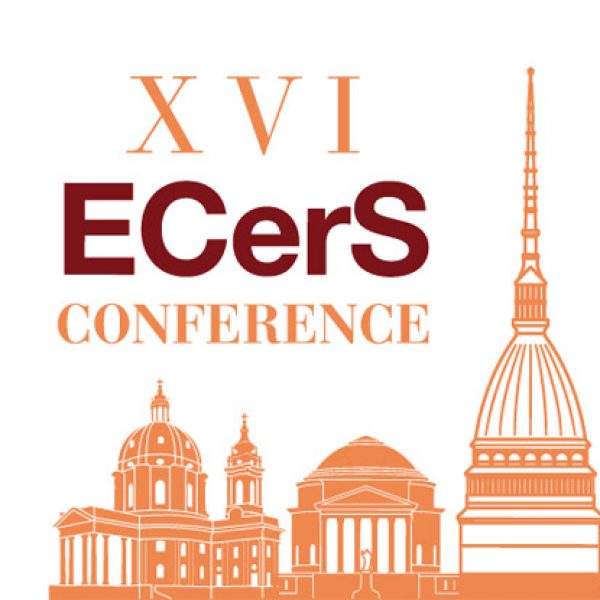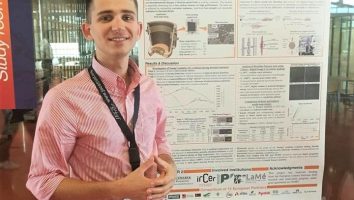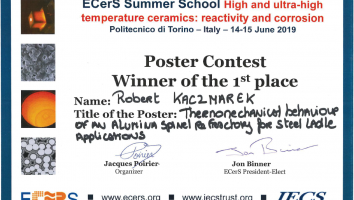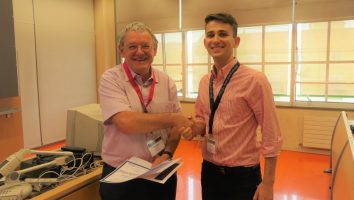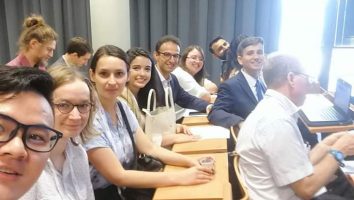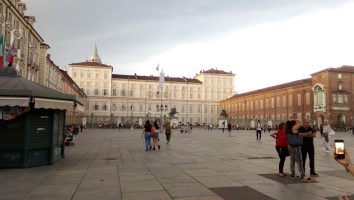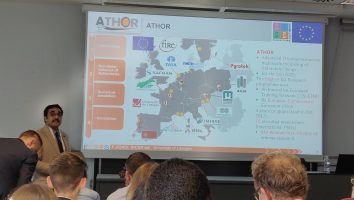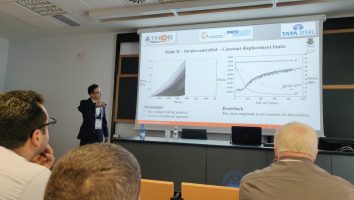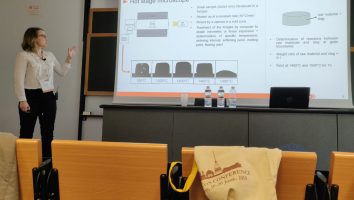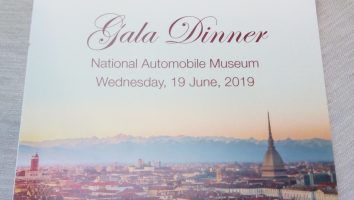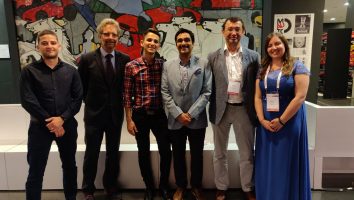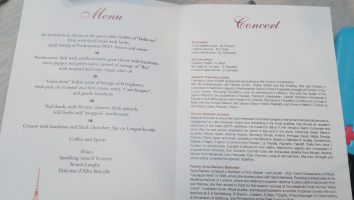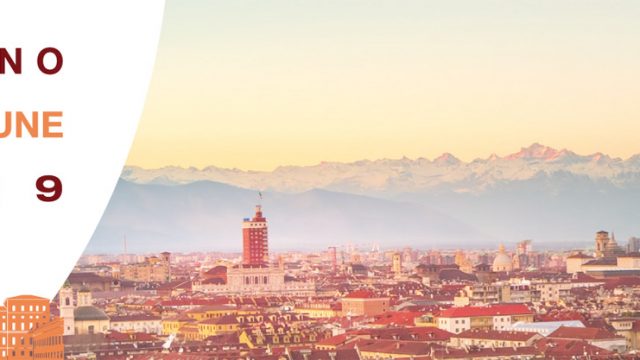
Summer school and ECerS conference – Turin, Italy

Every two years the European Ceramic Society (ECerS) organizes a general conference in one of the member countries. This year, the XVI conference took place at Politecnico di Torino – Italy and was preceded by a two day summer school about “High and Ultra-High Temperature Ceramics”. The ATHOR team had the pleasure to participate in both events.
The aim of the summer school (program) was to create a forum that brings together students, professors, and industrialists from the high and ultra-high temperature ceramics field. Here they could develop links and a common language for better research and technological innovations, as well as defining key challenges and open questions to move toward effective solutions. During this event, our ESRs had the chance to participate in the poster contest and our young researcher Robert Kaczmarek (http://www.ircer.fr/) won the first prize.
The XVI ECerS conference (general program) started with an opening ceremony and two plenary lectures:
- Bioprocess-inspired synthesis and fabrication for inorganic materials – Zhengyi Fu
- Ceramic for space and in space (ESA) – Tommaso Ghidini
Followed by scientific presentations:
- “Thermal properties characterization of insulating refractory materials used in steel ladles” – Diana Vitiello;
- “Investigation on thermal shock resistance of alumina-spinel refractory brick” – Sina Darban;
- “Thermomechanical characterization of an alumina spinel refractory for steel ladle application” – Robert Kaczmarek;
- “The influence of loading protocol on the damage development in mechanical fatigue tests on silica refractories” – Vahid Tadaion;
- “Impact of composition change of alumina rich slag on the corrosion of raw materials used in steel making refractories” – Camille Reynaert;
- “Discrete element method (DEM) modelling of wedge splitting test by focusing on the brittleness of quasi-brittle materials” – Farid Asadi;
- “Effect of creep of refractory masonry wall subjected to high temperature” – Pratik Gajjar;
- “Advanced measurement for in-situ thermo-mechanical monitoring of large sample under thermal gradient (ATHORNA)” – Marc Huger;
- “Thermo-mechanical characterization of alumina spinel bricks” – Rafael Oliveira;
- “Application of the integrated digital image correlation technique associated Brazilian disc tests to identify the creep behaviour of refractory materials” – Lucas Teixeira.
And poster exhibition:
- “Thermal cycling behaviour of alumina-spinel castables” – Ilona Kieliba.
The conference ended with a gala dinner at the National Automobile Museum. Here the participants could enjoy nice Italian food and an Opera concert.
Our young researchers took also part in the Young Ceramists Network (YNC) Students evening. This is a network for young people (under 40 years old) conducting research on the field of Ceramics. The aim of the evening was to give the opportunity to Master and Ph.D. students to socialize, interact and discuss their work in a warm and festive atmosphere. A great opportunity to start professional and/or friendly relationships, to initiate collaborative networks and plan lab visits.
from the European Union's Horizon 2020 research and innovation program under grant
agreement no.764987

